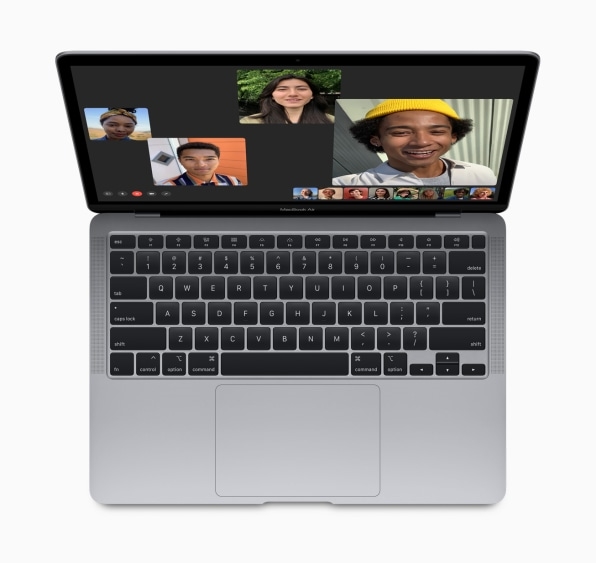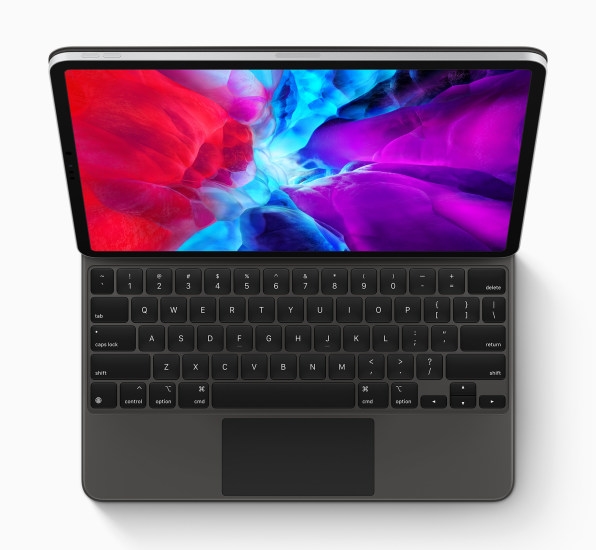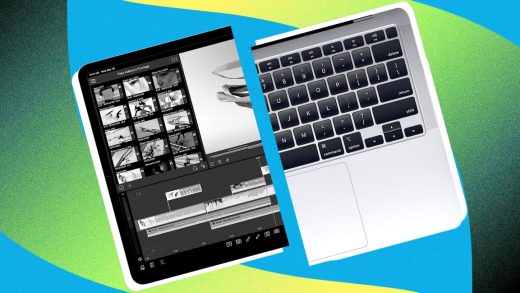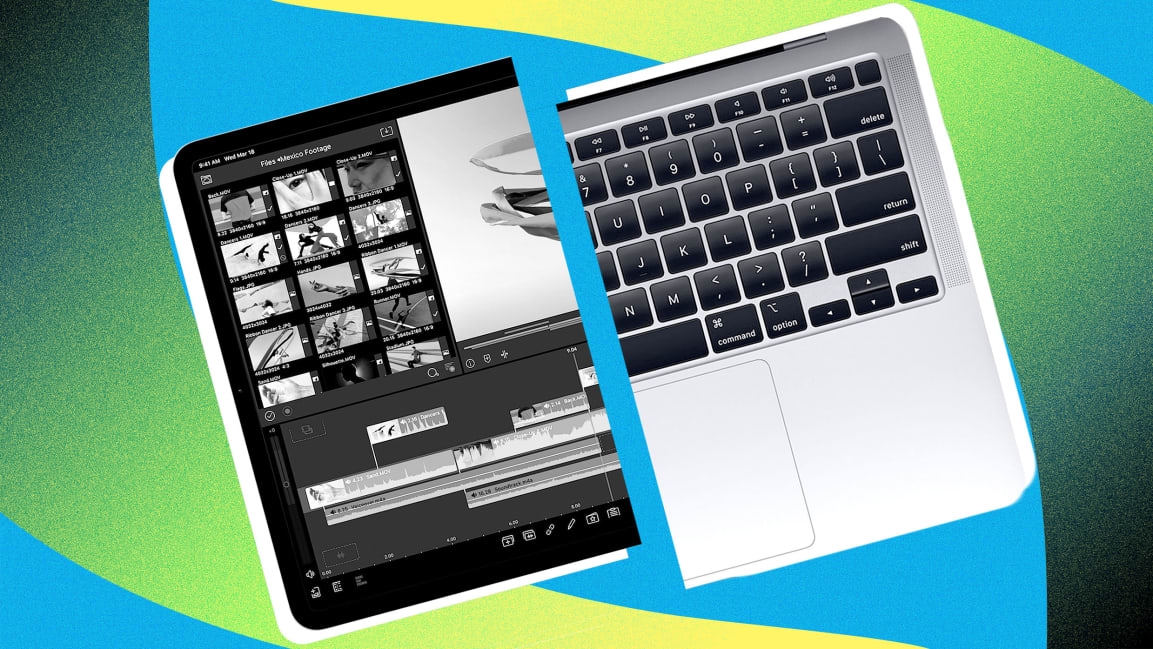The MacBook Air and iPad Pro are more alike—and different—than ever
It won’t be remembered as a major moment in Apple history. But we should pause to note that for the first time this week, Apple announced new MacBook Air and iPad Pro models that look like near twins when viewed from above.
Here’s the new MacBook:

[Photo: Courtesy of Apple]
And here’s the new iPad Pro, as ensconced in its optional case:

[Photo: Courtesy of Apple]
The physical similarity stems from the fact that with both new devices, a big part of the news is the introduction of the Magic Keyboard. That’s Apple’s name for the nice, comfy, traditional keyboard that’s replacing the flatter, trouble-prone keyboard on the previous MacBook Air. With its optical case, the iPad Pro is getting both a Magic Keyboard and a roomy, MacBook-style trackpad, making the setup much more laptop-like than ever before. (The trackpad is enabled by the new cursor feature that’s coming to all iPads in a software update next week.)
Apple, in other words, has introduced two new laptops—one running MacOS, one running iPadOS.
Which is not to say that the overall vibe of these upgrades is similar. With its classic keyboard, zippier processor, and return to a $999 starting price (with a newly generous 256GB of storage), the MacBook Air feels like a continuation of the ongoing comeback of a machine that was once rumored to be on the chopping block. The MacBook Air is a deeply conventional computer that’s more about hitting a sweet spot than looking to the future. But the spot it’s reached is, indeed, sweet: Apple says that the Air is its best-selling Mac.
Meanwhile, the new iPad Pro focuses most of its upgrading—other than that Magic Keyboard case, which won’t arrive until May—on its rear cameras. Like an iPhone 11, the iPad Pro now sports an extra-wide angle lens along with its wide-angle one. It adds a rear LiDAR scanner that lets it scan environments in 3D, making for faster, more precise augmented reality. And it now has five”studio quality” microphones for serious audio recording. These updates are less about pleasing the masses—who probably haven’t been doing that much photography, AR, and studio recording with an iPad Pro—than establishing new use-case scenarios.
And Apple’s marketing pitch for the iPad Pro and Magic Keyboard case sure isn’t arguing that they add up to something roughly comparable to a MacBook Air. Instead, the company’s “How to Correctly Use a Computer” ad plays up the differences between an iPad Pro and a more conventional computer:
The MacBook Air certainly falls into the “computer” bucket that this ad implicitly disparages. In fact, an Air is more of an old-school “computer” than many Windows systems, since it doesn’t have a touchscreen. Nor does it have the option for built-in LTE, as some Windows laptops offer. The ad makes oblique reference to both shortcomings: “Do not touch the screen” and “You must stay in reach of a Wi-Fi signal.”
For the MacBook and iPad lines to truly intersect, a MacBook would need to be as good at iPad-type stuff as an iPad is, and vice versa. There’s no evidence that Apple has this goal in mind. Instead, its contrarian refusal to put touchscreens on Macs has kept a wide distance between the two platforms.
Still, there’s every reason to believe that this distance will shrink in some ways. Last year, Apple renamed the iPad version of iOS as iPadOS, suggesting that it will be more aggressive about building out the features iPads need to be well-rounded computing devices capable of industrial-strength productivity. (There’s currently plenty of room for improvement on this front.) Apple also seems to be getting ready to release Macs based on its own processors rather than Intel chips. That could lead to thinner, lighter, fanless Macs with better battery life—Macs, in other words, that feel a bit more like iPads.
Will the two lines ever fully converge? Apple presumably has an overarching vision and detailed roadmap in mind that it hasn’t shared with us. For now, the company seems content to let the MacBook Air exude tradition and the iPad Pro push boundaries. They may look nearly identical in some of Apple’s beauty shots, but their souls remain their own.
Fast Company , Read Full Story
(11)



